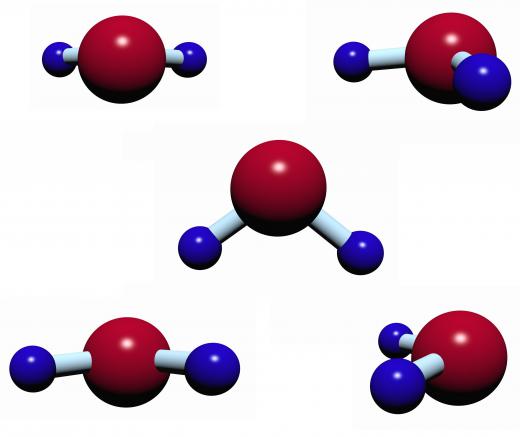What are Wetting Agents?
A wetting agent is a chemical compound that reduces the surface tension of a liquid. The surface tension of a liquid is the tendency of the molecules of a liquid to bond together and is determined by the strength of the bonds between the liquid’s molecules. A wetting agent stretches these bonds and decreases the tendency of molecules to hold together, which allows the liquid to spread more easily across any solid surface.
A wetting agent can also be known as a surfactant, which is a type of chemical that alters the properties of liquids, because it causes changes to the surface tension of the liquid. Surfactants can also contain dispersants, which are chemicals that separate oil and water, and emulsifiers, which combine oily liquids with water. Wetting agents can be made up a variety of chemicals, all of which have this tension-lowering effect.

When the wetting agent is applied, it causes the liquid to create particles called micelles, which allow the penetration of the solid by the liquid. Micelles are made up of molecules that attract water and molecules that repel water. In water, the micelles assemble in a large cluster where the water-attracting molecules form a ring with the water-repelling molecules in the center. When the wetting agent is used in oily liquids, the structure of this micelle is reversed as the water-repelling molecules are on the outside of the ring because they are attracted to the oily liquid and the water-attracting molecules are repelled by the oily liquid.

Most people come into contact with wetting agents regularly, as many are for personal use. Others, which are not meant for personal use, can have much harsher chemical compounds in them. Wetting agents are used in a number of cleaning products, such as detergents, shampoos, conditioners and soaps, which are typically used with water. These chemical compounds are very useful in decreasing surface tension of water and spreading the water over the solid surfaces that it comes into contact with, such as clothing, skin and hair.

Some wetting agents are actually used inside the human body. Laxatives are just one example of a wetting agent used internally. Since dehydration of the intestinal tract can often cause constipation, adding a wetting agent can help solve this problem by applying water to the impacted intestinal material. Toothpaste can also contain wetting agents, although swallowing toothpaste is generally not recommended.

Harsher chemical compound examples of wetting agents may include pesticides, herbicides and insecticides. Wetting agents are used in these products to allow the other harmful chemical agents in these products to penetrate the solid they are applied to. This type of chemical liquid application is also used in paint to decrease its surface tension so it applies more easily to the solid surface being painted.
AS FEATURED ON:
AS FEATURED ON:















Discussion Comments
Those internal wetting agents mentioned here can also have the opposite side effect, if you use too much; they can leave you horribly dehydrated if you use too many laxatives or other products, unbalancing your body all over again.
Post your comments